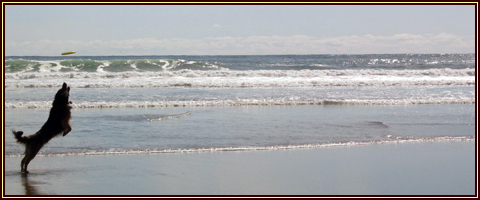Decatur Veterinarian Asks: Does Your Dog Need Rehab?
Does it seem strange to you that a Decatur veterinarian is writing about arthritis? Well, I’d like to explain. I suspect that many people don’t know that arthritis isn’t limited to humans. That’s right! Many animals can develop painful arthritis, too, including your dog or cat. And, since certain pets, like dogs, are active companions to “their” humans during many daily activities, arthritis can be especially disabling. Arthritis in humans can make simple activities, like going for a walk and climbing stairs extremely painful. Because dogs frequently accompany their owners, dogs can experience the same kind of pain and debilitating problems doing the activities that their owners do.
Simply going for a walk, let alone fetching a tossed ball or running in the fields, can be very difficult and extremely painful for a dog with arthritis. To put it another way, arthritis can take the fun out of your dog’s “purpose” in life…to have fun! As a attentive veterinarian in Decatur I am relieved to tell you that treatment for canine arthritis is not totally reduced to the use of pain medication. Just as humans suffering from arthritis often benefit from physiotherapy that helps to improve joint mobility, dogs can, too. Physiotherapy, in humans, helps to lessen arthritic inflammation and improve function of the affected joints and limbs. So, how does physiotherapy affect canine joints and limbs, and what regimens are most effective?
Though physiotherapy for dogs has been around for a while now, until recently there hasn’t been adequate research done to competently document its effects on canine arthritis. But, according to a new study, the results of which were published in the American Journal of Veterinary Research, verification of the efficacy of physiotherapy in reducing arthritic inflammation and immobility has been made by researchers at the University of Veterinary Medicine in Vienna.
The researchers studied the movements of the joints in the front and back legs of dogs through the use of a specially-designed treadmill and sophisticated computer algorithms. While the researchers took notes and measurements, the dogs performed three types of exercises: walking uphill, walking downhill, and walking over low obstacles.
The study showed that the three movement protocols had different and particular effects on the motion of the dogs’ joints. While walking downhill did not appear to have much therapeutic benefit because it caused the hip to be less bent and the tarsal joint to be less extended, walking uphill caused notably greater bending at the hip, while the stifle joint (the dog’s knee) was less extended. There were also decreases in the accelerations at the carpal and elbow joints. However, the most consequential effects came when the dogs walked over low obstacles. This resulted in additional bending of all joints except the hip and shoulder, and greater extensions of the carpal and stifle joints.
You may be curious, at this point, what all of of this means for your dog? For one thing, it indicates that walking uphill is an easy exercise that you could provide to help to improve your dog’s joint flexibility, particularly at the hip joint, and that adding low obstacles could aid in improving the bending of the joints in the forelimbs and hind limbs. Adding low obstacles should be avoided, however, if your dog has recently undergone surgery for the tibia, because such activity could result in increased bending of the joints and potentially strain the tendon that joins the knee to the shin.
And, as a dog loving Decatur veterinarian, I would like to make one final suggestion for “man’s best friend,” since the study indicated that walking downhill wasn’t shown to be effective anyway, after you’ve exercised your dog uphill, perhaps a ride in the car back down the hill would be a nice treat!







